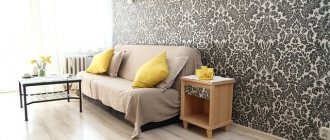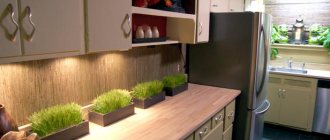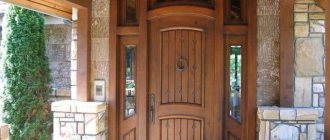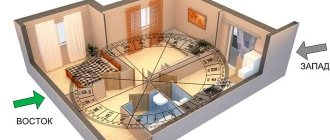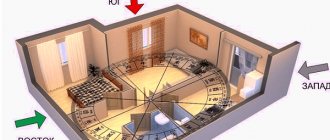Fill the house with sunlight and save on lighting and heating, protect from cold piercing winds and get rid of drafts and unnecessary heat loss. All this is real if you think about what location of the house on the cardinal points will be correct for a particular region of Russia.
House layout according to cardinal directions
In addition to the generally accepted rules of insolation and standards in force in a particular climate zone, there are examples of neighbors verified by personal experience, as well as personal preferences of home owners. Before undertaking the construction and laying of utilities, it is necessary, taking into account all these factors, to correctly orient the structure relative to the cardinal directions. And then the further operation of the house will be more comfortable and economical.
General information
A plot for housing construction (IHC) is a plot of land purchased for personal purposes. Building regulations allow not only recreation and cultivation of crops there, but also construction of residential and commercial buildings.
The status of the main house can be different (this is directly affected by the type of land):
- Individual house.
- Garden house (cottage).
- Country house.
According to the norms for the development of land plots, each of the above varieties falls under the concept of “manor house”. You cannot build them wherever you want: the location of the main and auxiliary facilities is strictly regulated by SNiP.
Rest zone
An outdoor dining area is often located on the north or northeast side of the house, so you can have breakfast in the soft morning sun and then spend most of the day in the saving shade.
To construct such a site, there is no need to “also dig a pit” or even to arrange a deep sand cushion under it with the removal of the top fertile layer of soil. Since in the future you may decide to move the site and grow plants that prefer shade here, it is more prudent to lay the tiles on a layer of sand poured over the fertile layer to completely preserve it. In a buried (preserved) form, the pristine soil lies for decades without losing its properties, and is then easily included in crop production.
Distance to various objects on the site
When developing a site development plan, you should be guided by the minimum permitted distances from the home to other buildings:
- Economic facilities and places where livestock, poultry and animals are kept - 15 m.
- Compost pit, country closet, garbage bin - 15 m.
- Filtration well with a productivity of 1 m³/day – 8 m.
- Filtration well with productivity up to 3 m³/day – 10 m.
- Septic tank with productivity up to 1 m³/day – 5 m.
- Septic tank with productivity up to 3 m³/day – 8 m.
As for the summer shower, it falls within the standards for a septic tank.
Minimum distances between various objects on the site
When determining the distance between the main house and various sources of pollution, specific factors are taken into account (the presence of noise, electromagnetic vibrations, vibration, radiation, unpleasant odors, etc.). There are special regulations for each situation.
Laws and rules for the location of buildings
To avoid unnecessary questions, we note that the current standards were created taking into account the experience of operating structures and were developed specifically to ensure the safety of health and life. That is, you need to follow the norms not because someone just invented them, this is a real necessity that can save you a lot of nerves, strength and health.
All standards for the location of the house and other structures on the site, which we will talk about, are mandatory or advisory in nature. The first ones must be fulfilled, the second ones - at the request of the owner. The latter include, for example, requirements that were previously in force but were cancelled.
Distance to objects in the neighboring area
You should also take into account the distance of elements of the neighboring area specified by the rules:
- Country house – 3 m.
- Auxiliary buildings – 1 m.
- Barn, pigsty, chicken coop - 4 m.
- Tall trees - 3 m.
- Trees are of average height – 2 m.
- Bushes - 1 m.
Minimum distance between objects in adjacent areas
These standards apply to objects in each of the adjacent areas.
Penalties for non-compliance
Current legislation provides for penalties for owners who do not comply with these norms and requirements. If they are ignored, penalties may be applied to the person:
- administrative responsibility;
- fines;
- mandatory demolition of structures that do not meet the standards.
Compliance with the rules is not just an obligation, it is an opportunity to develop a site comfortably and safely. Regulations are created to protect people from many problems. By ignoring the rules, you endanger yourself and your loved ones.
The Render House company is engaged in the construction of turnkey cottages in compliance with all norms and requirements. To get advice and choose a project, call the phone number in the site header.
Distance between two residential buildings
The distance from a residential building to a similar structure on a neighboring site is regulated by separate fire safety standards, and depends on the fire safety class.
There are three such classes in total:
- A (concrete, stone, reinforced concrete and other houses made of non-combustible materials).
- B (dwellings made of non-combustible materials, where wood treated with fire retardants is used as flooring or finishing).
- C (wooden or frame houses).
When determining the distance (it can be from 6 to 15 m) between residential buildings on neighboring plots, their class is taken into account. Two stone cottages must be separated from each other at a distance of at least 6 m. The distance between a stone and wooden dwelling should be increased to 8 m. Fire safety standards require the greatest distance for two wooden houses: there must be at least 15 m between them.
Minimum distance between different types of residential buildings
Regulatory framework
The issue of the location of the septic tank on the site concerns several documents, so you will have to deal with each of them:
- SanPiN 2.2.1/2.1.1.1200-03 regulates the requirements for sanitary zones around objects potentially hazardous to the environment;
- SNiP 2.04.03-85 – rules for organizing external sewer networks;
- SNiP 3.05.04-85 and SNiP 2.04.01-85 - requirements for external and internal water supply and sewerage systems, if a well or well is used as a water source;
- SanPiN 2.1.5.980-00 – requirements for measures aimed at ensuring the purity of surface waters.
All the numbers, details and requirements in these documents are set out in great detail, but we will provide all the most basic data below so that you have an idea of the process of selecting a location for a septic tank. But you won’t be able to just start digging a pit to install a container in a certain place. First, you need to draw up a construction project, which will be approved by the SES , and if everything goes well, you will be given a building permit. If you wish and have the necessary skills, you can prepare the project yourself, but many still prefer to turn to specialists.
Next, we will study the basic requirements for the location of the septic tank on the site, specific standards for the distance from it to other objects.
Location of the house by cardinal directions
Having decided on the location of the house, it is necessary to correctly orient it in space: this will allow you to fill the home with natural light as much as possible, significantly saving costs on lighting and heating. As you know, the sun shines more intensely from some directions, and less intensely from others. In addition, the prevailing wind rose in this area is also taken into account. Despite the fact that each region has its own specifics, there are average statistics for the country. According to it, the western, northern, and northwestern directions are considered the most unfavorable: most often cold and gusty winds blow from there.
Ideally, the orientation of the home according to the cardinal directions looks like this:
- North side. A place to accommodate various technical and utility rooms and non-residential areas. If the house design has a built-in garage, then it is best to plan it on the north side. It is also possible to locate a boiler room, storage room (it can be heated or unheated) and a toilet without natural light. Since the northern wall is almost not illuminated and is not heated by the sun, it is usually made completely blank (without windows).
- Northeast side. An excellent option for the location of the entrance (porch, door, vestibule). In the dwelling itself along this side, heated premises for utility purposes are usually planned - laundries, workshops, tool rooms. Quite often the kitchen and bathroom face northeast.
- East side. The most favorable side, along with the south. It is suitable for most general purpose premises. If sports facilities (swimming pool, gym) are planned in the house, then it is recommended to place them in the eastern direction. There are also bedrooms for people with an active lifestyle who love physical work and getting up early. It is also convenient to plan a dressing room on the east side.
- Southeast side. An ideal option for placing a kitchen: it can be designed as a separate room, or combined with a dining room. Breakfast in the early sun has a very beneficial effect on appetite. This same wing is the most suitable place for placing offices and bedrooms for people with a creative character, as well as workers in mental professions. If there is a guest room, it is also recommended to place it on the southeast side.
- South side. A place for common areas where all family members are most often present. In the standard list, this applies to the living room, dining room, and children's room. If we are talking about a large house with additional rooms, then the southern wall is the optimal location for the winter garden, music and games room. If there is a terrace in the project, it is best to attach it from the south.
- West side. This direction, along with the north, is considered the most unfavorable. However, they can only be present here in non-residential premises. From a practical point of view, it is best to place a storage room, hallway and staircase on the west wall. When planning a toilet, it is better to design it with a window, but you need to prepare for the fact that it will be quite cool.
An example of the orientation of a house and its premises according to the cardinal directions.
Along with generally accepted standards, each home owner also has his own personal preferences. Therefore, the orientation of the house according to the cardinal directions can be influenced by the habits of the owners and the family’s lifestyle. For example, not every housewife likes a kitchen flooded with sunlight: during prolonged cooking, this can become a serious drawback. To ensure that the air already heated by a stove or oven is also heated by the sun's rays, it is sometimes more advisable to place the kitchen in the north or northeast.
What should the front door be like: important rules
- According to Feng Shui, it is strictly forbidden for the entrance to the house to be facing the cemetery.
- The front door should be the most massive in the house. It should be at least twice as tall as its width (or even better, if it’s three times). A rectangular door shape is considered favorable.
- It is important that the front door has a fairly attractive appearance, and is also durable and heavy; metal cladding is very welcome.
- Make sure your front door is well lit.
- But you should give up the peephole and replace it with an intercom.
- It is worth placing steps at the front door.
- An important aspect is that all doors open into rooms in a clockwise direction and are made of the same material.
- Also the most important point is that it is important that the doors are not creaky and, in principle, do not make any sounds.
- The ideal material for making doors is wood, but the average one is not very old, but not too young either.
- It is important to choose only good quality wood, which does not have any flaws; the correct size is also important: focus on the “golden mean”, avoiding extremes - too large or, on the contrary, small doors.
- Ideally, every door has a threshold.
- Please pay attention to the fact that there are no obstacles at the front door: large trees with stones, columns, lamp posts, corners, elevators, railings, stairs or anything else.
- According to Feng Shui, placing several doors opposite each other is considered negative if they are lined up parallel to each other.
- Make sure that the front door is not located directly opposite the front door of your neighbors' house.
- All windows and doors must be at the same level along their top line. The only exception is the front door, which may be slightly higher than the others. All other doors of the home cannot be larger than the front door.
- The bad aspect is if the doors open towards each other.
- It is important that the total number of doors in the housing must be even, but not ending in zero (for example, like 10).
- If the door has cracks or is old, the owner of the house will have to go through a difficult time and will face various social problems.
- The back door in the house should be the smallest size so that it cannot be seen from the front door. Make sure it is always covered.
If you are not able to adhere to all these rules, do not rush to get upset. You can always use a special protective yantra (diagram), which is attached to the door from any direction and guarantees protection from all evil.
Location of the house depending on the area of the plot
The size of the land area is a serious factor that requires taking into account the location of the house in the planning.
Location of the house on a plot of 6 acres
It’s a very small area, so you have to try a lot to squeeze all the important objects into it.
Typically, any site, regardless of its size, consists of three zones:
- House and outbuildings.
- Garden Garden.
- A place to relax.
The house is the most important element of the site, so first of all it is necessary to determine its location. If the lion's share of a small area will be occupied by a garden and a vegetable garden, then the most suitable place for a cottage will be the northern part of the site, directly next to the fence. This will protect the planted plants from shade and cold northern winds. If the land was purchased for recreation, then any place is suitable for housing: the main thing is to achieve harmony and comfort.
Examples of the location of houses on small plots (click on the image to enlarge):
How to arrange houses on a plot of 10 acres
Such land plots are found most often. Thanks to their larger area, there is room for a spacious cottage, bathhouse, garden, vegetable garden, gazebo, playground and modest pond. If everything is planned rationally, there is also room for a guest house and a summer kitchen. The best option for a house for a plot of 10 acres is a 10x10 building, located, as in the previous case, on the north side of the territory. This allows you to achieve the best lighting for the gardening area, providing it with protection from cold northern winds.
This is what plots of 10 acres look like
Along with the classic (geometric) layout, the plot area of 10 acres allows the use of other, more non-standard options. Lovers of privacy and solitude will like the option of placing a home in the middle of the garden. In this case, the starting point for its orientation is not the axis of the site, but directly the cardinal directions. A gravel driveway can be laid to the roadway from the house. A separate pedestrian path will also be required.
Examples of the location of houses on middle plots (click on the image to enlarge):
How to locate a house on a plot of 20 acres
Such a vast territory removes any restrictions on the implementation of design ideas and the placement of various auxiliary buildings. At the same time, it is important to achieve competent and rational placement of all elements in order to make the territory harmonious, functional and easy to use. As for the suitable landscape style, for plots of 15 acres or more, the so-called. "picturesque" style. It is characterized by the presence of smooth winding lines, asymmetrical placement of elements, and widespread use of decor (forged parts, lanterns, bridges, flower beds, etc.).
This is what a plot of 20 acres looks like
Eco-style, which preserves the almost original appearance of the area, is also very popular in the design of large areas. This approach will require only slight adjustments to the existing natural data, without significant investment. The chosen landscape design style will directly influence the location of the residential building. Along with the classic location (northern part of the site), the vastness of the territory allows the use of other schemes. In any case, it is advisable to choose the highest point of the area for the house, equipping it with a second exit to the backyard.
Examples of the location of houses on large plots (click on the image to enlarge):
What to do if the site does not allow you to orient the house
There may often be reasons why a house cannot be positioned according to geographical directions, creating advantages. These reasons are:
- Small area for building a building.
- Soil quality and characteristics.
- Difficult landscape.
- Unique natural conditions, such as wastelands or mountain passes.
What to do in this case? First of all, you need to start with designing the house, taking into account all the negative and positive factors that may arise.
If it is not possible to make maximum use of natural light or solar heat, then it is necessary to additionally consider options for insulation and lighting. This will be somewhat more expensive, but will completely protect yourself from future possible discomfort.
What's the result? The location of a residential building on the cardinal points provides the opportunity not only for future comfortable living, but also prospects for saving money. Our article explains the basic principles of home orientation and gives future owners the opportunity to decide for themselves where and what room to arrange.
Influence of plot shape
In addition to the area of the building area, the location of the main house is largely influenced by its shape.
How to locate a house on a narrow plot
It is most difficult with elongated sections, because... such a configuration greatly limits architectural and design thought. On many positions it is necessary to compromise, starting from the specific state of affairs. Zoning a narrow territory encounters significant difficulties, and ready-made standard designs for suitable housing are extremely rare. When determining the location for a house, in this case, the relief and orientation of the territory are taken into account.
Examples of planning a narrow plot of land
As a rule, a cottage on an elongated area is located so that its pediment faces the street. If the plot of land is adjacent to a central noisy road, the dwelling is moved deeper into a quieter sector. The third option for placing a house on a narrow plot is one of the sides (where there is the most shade). This allows for rational exploitation of the territory, expanding the space in front of the estate and bringing all other objects closer.
Layout of a narrow plot of land
How to place a house on a rectangular plot
The most convenient form of territory for construction. The location of the house in this case is designed depending on the preferences of the owners and the features of the landscape. If the site is located on a southern slope, it is best to place the house at the highest point. On the eastern or western slope, they try to move the dwelling closer to the north side, also choosing the highest place for this. The slope to the north is considered the most inconvenient: in this case, the most optimal place to place the house would be the western border, or the middle of the slope (for this you have to use bedding). Smooth rectangular plots, depending on their size, can be designed traditionally (a house on the north side) or with the housing shifted deeper into the territory.
Examples of planning rectangular plots
Location of the house on a corner plot
The most difficult situation for solving the problem of where to locate the house. Additional difficulties arise when the home has a typical rectangular or square shape. The best option for placing such a building is along the axis of the territory, or with some offset along the axis. A more optimal approach is to design a cottage based on the specific situation on the site. In addition, a corner plot of land usually has two-way street traffic. This intersection of streets has a direct impact on the location of objects on the site, limiting the choice of location for a house.
Examples of layout of corner areas (click on the image to enlarge):
Conclusion
In conclusion, we can say that the correct placement of the house regarding the cardinal directions will have a beneficial effect on the life and well-being of the building and the people living in it.
According to the centuries-old experience of house builders, which include the Slavs. History knows both majestic buildings and classic huts, once built by the Slavs. All these structures were erected with orientation towards the cardinal directions. Perhaps our ancestors were much wiser and had more knowledge than modern people.
Another important aspect is that: windows, rooms, corridors, utility rooms were placed in a certain combination with orientation to the cardinal directions for more comfortable practical use.
Well, the most important positive effect of such a house orientation is significant savings in money, materials, energy and fuel for the long period of operation of a residential building.
Feng Shui house location
Recently, when planning the location of a house on a site, the eastern teachings of Feng Shui have been used, taking into account the presence or absence of positive or negative energies at a person’s place of residence. In the process of research, energy flows emerging from the bowels of the earth to the surface are analyzed. It is of great importance whether there are faults in the earth’s crust in the area, and what kind of radiation comes from these formations.
An example of a site located according to Feng Shui: smooth curves, rounded shapes, water elements
Although our country is Orthodox, there is a certain soundness in the feng shui advice:
- Don't build a house on top of a mountain. It is not recommended to choose the upper part of the slope to place the house. There is a completely logical explanation for this, because... This place is blown by strong winds and lacks shade.
- Give preference to traditional site forms. It is better not to choose other options: if the acquired territory has an irregular configuration, it is advisable to break it up into more than several sectors of the usual shape.
- Avoid proximity to places that have negative energy. It is not recommended to build a home near a cemetery, highway, hospital, old ruins, prison, etc. You should also move away from industrial and polluted areas.
Standards for distances between objects
In order to successfully place a house on a site, you must first decide how many and what kind of objects are planned. On the territory of land for individual housing construction (individual housing construction) you can put:
- Vacation home;
- doublet house (for 2 families);
- cottage (garden house);
- small country house.
Various additional buildings and outbuildings are added to them. An additional structure can be:
- bath;
- summer cuisine;
- alcove;
- pool;
- car parking area;
- place to relax - barbecue, summer swing, hammock, home trampoline, etc.
Outbuildings:
- a shed where all sorts of tools, sports equipment and other accessories are stored;
- barn for keeping pets or birds;
- dog enclosures;
- warehouse for storing firewood, coal, fuel briquettes;
- warehouse for garden utensils;
- workshop;
- garage;
- a basement for storing preparations for the winter;
- country toilet.
Comfortable location of the cottage in the center on a square plot Source avatars.mds.yandex.net
In addition to all this, you need to determine the space allocated for a vegetable garden (if necessary), a greenhouse, a garden, a flower garden. A special place is allocated for a septic tank and autonomous sewage system. If there is a well, then its location is also taken into account.
After a list of everything that will be placed on the site has been compiled, they look at how and where it is best to place everything. This is where the SNiP rules play a major role. Because you can’t place it however you want. It is important to maintain distances from one object to another.
How to determine cardinal directions using mobile applications
Almost every phone is already sold with the Compass app .
- There is definitely a Compass application on iPhone and iPad.
- It is also available on Android. For example, on a Xiaomi phone the Compass application is located in the Tools folder (in the same place as Contacts, Clock, Calculator...):
Built-in Compass application on Xiaomi
Opened the application
When you open the application, you need to move the phone, holding it at arm's length in a figure eight in space. This is how the application is configured. After this, the compass will “orient” and the needle will stop twitching. It will consistently show the direction of north and south.
In general, there are many mobile compass applications for all operating systems. But it's better to use the app that comes with your phone.
Please note that these apps require a magnetic sensor on your phone to work. Sometimes it's called just "compass," but it's a technical sensor, not an app; the application is installed on top. This is the technical specification of the phone.
To test your phone for the presence of a sensor, find it on the Yandex Market and in the “detailed specifications” look at the “Other functions->Sensors” section. For example, the Apple iPhone 7 has a sensor:
If your phone has a magnetic sensor but not an app (unlikely), here are some mobile apps that show a compass needle on the screen:
| Android | Compass 360 Pro Free, Compass, Compass Steel 3D |
| iOS | Compass, Free HD Compass |
The Internet is usually not required for applications to work. And if there is no sensor, the application will not work.
I tested a couple of apps on an old tablet that didn't have its own compass app. Honestly, it's terrible. I have a Samsung Galaxy Tab, it seems to have a magnetic sensor, but you can’t get out of the woods with such compasses. Slowly, like a snail, the arrow rotates around the screen and points first in one direction, then in the other. I do not rule out that this is a technical malfunction.
In the new Xiaomi phone, the built-in Compass worked perfectly.
There are also traditional ways to determine cardinal directions.

